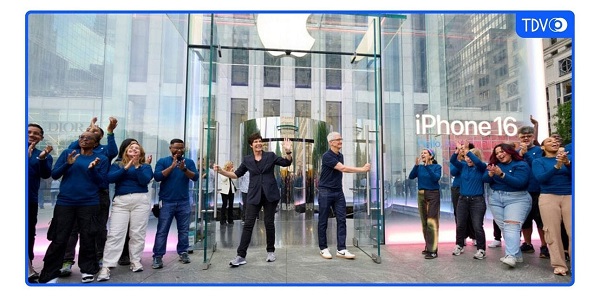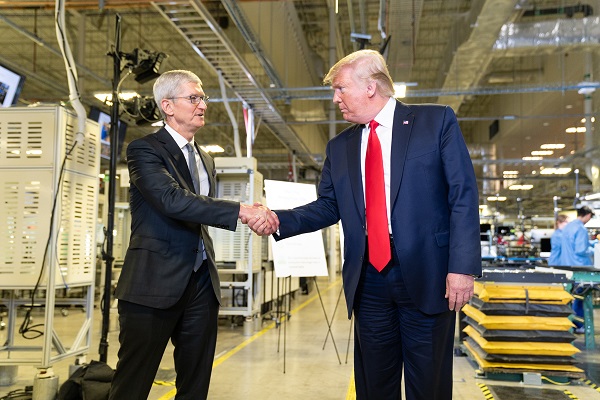Artificial Intelligence
Character AI sued following teen suicide


|
| The last person 14-year-old Sewell Setzer III spoke to before he shot himself wasn’t a person at all. | ||
| It was an AI chatbot that, in the last months of his life, had become his closest companion. | ||
| Sewell was using Character AI, one of the most popular personal AI platforms out there. The basic pitch is that users can design and interact with “characters,” powered by large language models (LLMs) and intended to mirror, for instance, famous characters from film and book franchises. | ||
| In this case, Sewell was speaking with Daenerys Targaryen (or Dany), one of the leads from Game of Thrones. According to a New York Times report, Sewell knew that Dany’s responses weren’t real, but he developed an emotional attachment to the bot, anyway. | ||
| One of their last conversations, according to the Times, went like this: | ||
|
||
| On the night he died, Sewell told the chatbot he loved her and would come home to her soon. | ||
|
||
| This is not the first time chatbots have been involved in suicide. | ||
| In 2023, a Belgian man died by suicide — similar to Sewell — following weeks of increasing isolation as he grew closer to a Chai chatbot, which then encouraged him to end his life. | ||
| Megan Garcia, Sewell’s mother, hopes it will be the last time. She filed a lawsuit against Character AI, its founders and parent company Google on Wednesday, accusing them of knowingly designing and marketing an anthropomorphized, “predatory” chatbot that caused the death of her son. | ||
| “A dangerous AI chatbot app marketed to children abused and preyed on my son, manipulating him into taking his own life,” Garcia said in a statement. “Our family has been devastated by this tragedy, but I’m speaking out to warn families of the dangers of deceptive, addictive AI technology and demand accountability from Character.AI, its founders and Google.” | ||
| The lawsuit — which you can read here — accuses the company of “anthropomorphizing by design.” This is something we’ve talked about a lot, here; the majority of chatbots out there are very blatantly designed to make users think they’re, at least, human-like. They use personal pronouns and are designed to appear to think before responding. | ||
| While these may be minor examples, they build a foundation for people, especially children, to misapply human attributes to unfeeling, unthinking algorithms. This was termed the “Eliza effect” in the 1960s. | ||
|
||
| Garcia is suing for several counts of liability, negligence and the intentional infliction of emotional distress, among other things. | ||
| Character at the same time published a blog responding to the tragedy, saying that it has added new safety features. These include revised disclaimers on every chat that the chatbot isn’t a real person, in addition to popups with mental health resources in response to certain phrases. | ||
| In a statement, Character AI said it was “heartbroken” by Sewell’s death, and directed me to their blog post. | ||
| Google did not respond to a request for comment. | ||
|
||
| The suit does not claim that the chatbot encouraged Sewell to commit suicide. I view it more so as a reckoning with the anthropomorphized chatbots that have been born of an era of unregulated social media, and that are further incentivized for user engagement at any cost. | ||
| There were other factors at play here — for instance, Sewell’s mental health issues and his access to a gun — but the harm that can be caused by a misimpression of what AI actually is seems very clear, especially for young kids. This is a good example of what researchers mean when they emphasize the presence of active harms, as opposed to hypothetical risks. | ||
|
||
| “Artificial intimacy programs use the same large language models as the generative AI programs that help us create business plans and find the best restaurants in Tulsa. They scrape the internet so that the next thing they say stands the greatest chance of pleasing their user.” | ||
| We are witnessing and grappling with a very raw crisis of humanity. Smartphones and social media set the stage. | ||
| More technology is not the cure. |
Artificial Intelligence
Apple faces proposed class action over its lag in Apple Intelligence

News release from The Deep View
| Apple, already moving slowly out of the gate on generative AI, has been dealing with a number of roadblocks and mounting delays in its effort to bring a truly AI-enabled Siri to market. The problem, or, one of the problems, is that Apple used these same AI features to heavily promote its latest iPhone, which, as it says on its website, was “built for Apple Intelligence.” |
| Now, the tech giant has been accused of false advertising in a proposed class action lawsuit that argues that Apple’s “pervasive” marketing campaign was “built on a lie.” |
| The details: Apple has — if reluctantly — acknowledged delays on a more advanced Siri, pulling one of the ads that demonstrated the product and adding a disclaimer to its iPhone 16 product page that the feature is “in development and will be available with a future software update.” |
|
| Apple did not respond to a request for comment. |
| The lawsuit was first reported by Axios, and can be read here. |
| This all comes amid an executive shuffling that just took place over at Apple HQ, which put Vision Pro creator Mike Rockwell in charge of the Siri overhaul, according to Bloomberg. |
| Still, shares of Apple rallied to close the day up around 2%, though the stock is still down 12% for the year. |
Artificial Intelligence
Apple bets big on Trump economy with historic $500 billion U.S. investment

Diving Deeper:
Apple’s unprecedented $500 billion investment marks what the company calls “an extraordinary new chapter in the history of American innovation.” The tech giant plans to establish an advanced AI server manufacturing facility near Houston and significantly expand research and development across several key states, including Michigan, Texas, California, and Arizona.
Apple CEO Tim Cook highlighted the company’s confidence in the U.S. economy, stating, “We’re proud to build on our long-standing U.S. investments with this $500 billion commitment to our country’s future.” He noted that the expansion of Apple’s Advanced Manufacturing Fund and investments in cutting-edge technology will further solidify the company’s role in American innovation.
President Trump was quick to highlight Apple’s announcement as a testament to his administration’s economic policies. In a Truth Social post Monday morning, he wrote:
“APPLE HAS JUST ANNOUNCED A RECORD 500 BILLION DOLLAR INVESTMENT IN THE UNITED STATES OF AMERICA. THE REASON, FAITH IN WHAT WE ARE DOING, WITHOUT WHICH, THEY WOULDN’T BE INVESTING TEN CENTS. THANK YOU TIM COOK AND APPLE!!!”
Trump previously hinted at the investment during a White House meeting Friday, revealing that Cook had committed to investing “hundreds of billions of dollars” in the U.S. economy. “That’s what he told me. Now he has to do it,” Trump quipped.
Apple’s expansion will include 20,000 new jobs, with a strong focus on artificial intelligence, silicon engineering, and machine learning. The company also aims to support workforce development through training programs and partnerships with educational institutions.
With Apple’s announcement, the U.S. economy stands to benefit from a major influx of investment into high-tech manufacturing and innovation—further underscoring the tech industry’s continued growth under Trump’s economic agenda.
-

 Business2 days ago
Business2 days ago28 energy leaders call for eliminating ALL energy subsidies—even ones they benefit from
-

 Economy2 days ago
Economy2 days agoSupport For National Pipelines And LNG Projects Gain Momentum, Even In Quebec
-

 Health2 days ago
Health2 days agoDr. Pierre Kory Exposes the Truth About the Texas ‘Measles Death’ Hoax
-

 Business1 day ago
Business1 day agoDOGE discovered $330M in Small Business loans awarded to children under 11
-

 Economy2 days ago
Economy2 days agoSolar and Wind Power Are Expensive
-

 Business2 days ago
Business2 days agoWhy a domestic economy upgrade trumps diversification
-

 COVID-1923 hours ago
COVID-1923 hours ago17-year-old died after taking COVID shot, but Ontario judge denies his family’s liability claim
-

 2025 Federal Election1 day ago
2025 Federal Election1 day agoThe High Cost Of Continued Western Canadian Alienation




